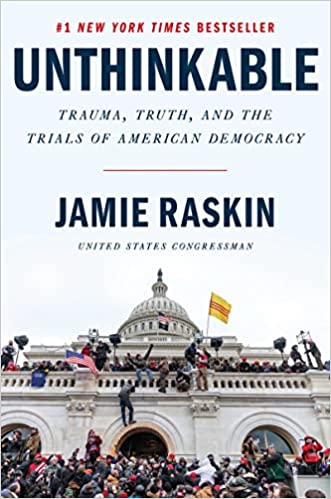The NH Coalition for Suicide Prevention, spearheaded by the Brain Injury Association of NH, was recently launched to raise awareness about the issue of suicide among members of vulnerable populations like people with brain injuries, people with disabilities, Veterans, first responders, police and the elderly. Their work complements the efforts of other NH organizations focusing on suicide prevention, including the NH State Suicide Prevention Council, Headrest and AFSP (American Foundation for Suicide Prevention, NH Chapter).
They launched an educational website during Suicide Prevention Awareness month (September of 2021) NH Coalition for Suicide Prevention (zerosuicidesnh.org), using a series of blogs that offer stories of hope and resilience “Play It Where It Lies”: KC Christensen and Life After Brain Injury — NH Coalition for Suicide Prevention (zerosuicidesnh.org), and resources Taking Care of Our NH Veterans: Resources For Those Experiencing TBI, PTSD and Suicide Ideation — NH Coalition for Suicide Prevention (zerosuicidesnh.org).
These blog posts are used to generate traffic on the website, build interest in joining the coalition and they are frequently shared with NH opinion leaders who have an interest in the suicide issue. The posts are strategically timed to sync up with a triggering event (e.g. the January 2022 release of the book “Unthinkable” by Rep. Jamie Raskin) or a specific time of year (e.g. holiday depression at Christmas, Veterans Day etc.)
Here is the actual blog:

Representative Jamie Raskin, in his new book “Unthinkable: Trauma, Truth, and the Trials of American Democracy,” finds catharsis in talking about the death of his son by suicide. His son Tommy’s death came just days before the attack on the U.S. Capitol on Jan. 6, 2021 – making a dark time even darker. “I realized I could spend the rest of my life trying to figure out what had happened or I could try to record it as quickly as possible and have a conversation with my family, my friends and my constituents in the country about it.”
Suicide is uncomfortable to talk about – whether we have lost someone who died by suicide or if we fear a friend or family member is considering suicide. Most of us want to know – what do we say? And what should we do?
Maryland Rep. Jamie Raskin released his new book, Unthinkable: Trauma, Truth, and the Trials of American Democracy, on Jan. 4th of this year. Raskin says writing about the loss of his son, who died by suicide a year ago, has helped him cope with the depths of his grief and enabled him to talk about it; which has enabled him to keep his son’s memory and spirit alive.
Raskin says his son Tommy “had a very highly refined moral sensitivity at a young age – something we appreciated and were proud of. But then it began to merge in with some depressive tendencies that showed up towards the end of college.”
While Raskin does not blame COVID-19 for his son’s suicide, he acknowledges this chapter in our history has been an enormously isolating and demoralizing period for young people across the country…and especially for those who already had a mental or emotional health struggle. “I realized I could spend the rest of my life trying to figure out what had happened, or I could try to record it as quickly as possible and have a conversation with my family, my friends and my constituents in the country about it – so I chose the latter.”
His book shines a spotlight on the issue of suicide – which touches many generations, not just youth. Older adults are about 12% of the population but make up about 18% of the suicides according to Jerry Reed, PhD, Sr. VP/Practice Leadership at the Education Development Center, an organization that runs suicide prevention programs nationwide. One factor may be that this group has access to lethal means such as firearms and medication.
Most of us want to know how to approach the topic of suicide – which is, let’s face it, an uncomfortable topic to raise. What can we say or do that will be constructive in suicide prevention? Here are a few ideas to consider:
- Share stories of hope, resiliency and recovery. There are many stories of people who have been helped by a program or service, or who have overcome an obstacle and chosen life over suicide. The NH Coalition for Suicide Prevention website features blogs that tell some of these stories; for example, the story of Jim Scott, who overcame a brain injury and substance use disorder to become an author. Like Raskin, he too found catharsis in telling his story and sharing the message of hope with others: https://zerosuicidesnh.org/blog/more-than-a-speed-bump-brain-injury-rehabilitation-and-recovery
- Describe available programs, services and other resources. It’s important to realize that you don’t have to solve the problem yourself – but you can play an important role in getting someone help. The “Resources” section of the NH Coalition for Suicide Prevention website offers contact information for many NH-based and national organizations that have the expertise to help.
- Point the person to a suicide hotline where they can get immediate help. Right now in NH, the number to call is 1-800-273-TALK (8255) … however, in July of 2022, 988 will be the new 3-digit number used nationwide as the National Suicide Prevention & Mental Health Crisis Hotline. https://zerosuicidesnh.org/blog/why-do-i-have-to-dial-603-before-every-call-now-the-change-that-could-help-save-a-life
- Pay attention to potential signs of suicide. Are you seeing an increased use of drugs or alcohol to escape depression? Are you hearing references to self-harm in conversation? Have you noticed behaviors like saying goodbyes, giving away prized possessions or making arrangements in the event of death? For more information on recognizing signs and taking action that could save a life, visit: https://zerosuicidesnh.org/how-to-identify-and-help-a-person-considering-suicide
- Ask-Listen-Safeguard. As difficult as it is to ask the question, “have you had thoughts of suicide?” It is a question that could save a life. Practice saying it out loud in a way that’s comfortable before you have the conversation with the person you are concerned about. Alternative: “Sometimes when people are struggling, they have thoughts of suicide. Have you ever had thoughts of suicide?” This opens the door for the next step: Listen. Your role here is to listen, not to solve their problems. Show empathy and assure them they are loved. Lastly, safeguard. What are the steps that need to be taken right now to keep them safe? Calling a hotline? Removing lethal means (like firearms or medications) from the home? Connecting them to a mental health counselor?
